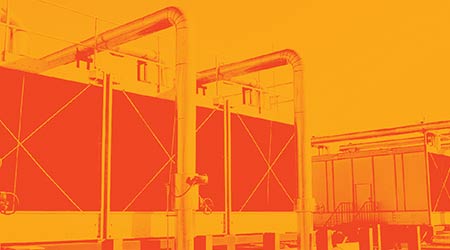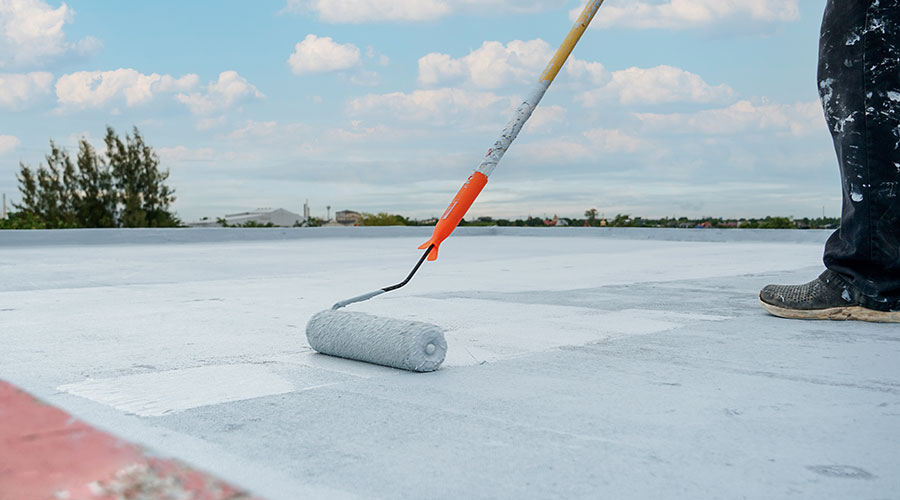 Regardless of the type of roofing system, one key strategy to keeping a healthy roof is to conduct routine inspections twice a year — after spring storms and before rains return in autumn.
Regardless of the type of roofing system, one key strategy to keeping a healthy roof is to conduct routine inspections twice a year — after spring storms and before rains return in autumn.Roof Inspections to Detect Problems
Properly inspecting a roofing system can help ensure it remains issue free and help increase its life expectancy.
Technology has become essential for diagnosing the health of roofing systems, but infrared imaging and drones are primarily complements to the real work of roof management — inspections.
“The absolute must-haves for effective roof inspections are educated eyes and an experienced mind,” Parker says. “The best gadgets are useless in the hands of someone with limited experience in roofing. Conversely, an old-hand at roofing will see things during a quick walk-through that the best gadgets would miss. So any maintenance department either needs someone on their staff that is well-versed in roofing, or they would be better of hiring out their routine evaluations.”
Regardless of the type of roofing system, one key strategy is to conduct routine inspections twice each year — after the spring storms and before the rains return in autumn. These events both create and reveal the presence of problems with roofs.
“When issues arise, it is critical that qualified roofing professionals address the situation,” Parker says. “Sending a repairman onto the roof with a caulking gun often results in misdiagnosis of the problem — water being trapped in the roofing system, the leak(s) going unaddressed for longer, as well as structural deterioration and indoor air quality issues related to the trapped moisture.
Preventing problems
Just as controlling blood pressure and eating a healthy diet can improve human health by preventing problems, preventive maintenance (PM) is essential for the long-term performance and overall good health of roofs. PM can help managers avoid costly structural repairs and indoor air quality issues.
One key component of preventive roof maintenance is tracking who accesses the roof. Too often, managers fail to monitor who accesses their roofs. For example, technicians inspecting and repairing rooftop HVAC units can damage key roof components.
“If the HVAC technician has something small and sharp lodged in the tread of his boot, every step across the roof is a hole in the only layer of protection from water intrusion,” Parker says. “Similarly, if the workman drops a sharp tool or a sheet metal panel is blown over by the wind during the service call, leaks are the likely result.”
Managers also can minimize roof damage from foot traffic by designating specific paths on roofs for technicians to use. They also can require technicians to put down a blanket that cushions the fall of any dropped tool and prevent it from damaging the roof.
Spotlight on safety
Ensuring healthy roofs means ensuring the safety of the workers responsible for inspecting and repairing them. Workers who are safe on the job can successfully access hard-to-reach areas of roofs, and they can put their expertise to work detecting and repairing damaged areas. Knowing the location of a problem is one way to save time and increase safety.
“Companies have now begun to integrate GPS into their safety equipment,” Fields says. “This allows managers to locate and mark hazards. Once a hazard is located, a warning is sent out to a crew member and from there, they can make the necessary duty adjustments.”
Weather — both hot and cold — can create harsh conditions for technicians who need to access a roof to conduct inspections and make repairs, so managers need to prepare for all possibilities. A great deal of work on roofs is done in the hot summer months, which only adds to the safety challenges.
“To combat this, many roofing companies are now putting sensors inside of the safety vests worn by crew members to track body temperature and heart rate,” Fields says. “This is an important safety component as it keeps the technician from becoming dehydrated or overheated—conditions that could lead to a number of different safety issues.
“One day soon, airbags will be worn by roofers, built into their safety vests. These airbags will be sensor-activated and deploy when a vertical drop is detected.”
Related Topics:














